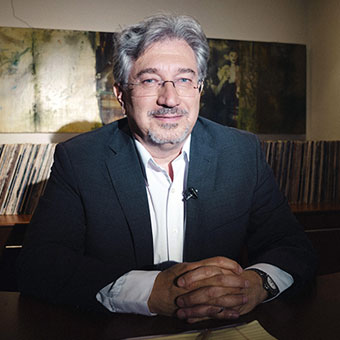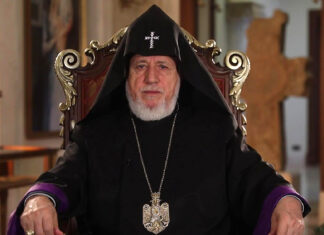WATERTOWN — The media commentator traveling the longest way to participate in the Armenian Mirror-Spectator journalists’ panel on Media Coverage of Armenia and Karabakh Today (October 27) at Tufts University is coming from Yerevan, but spent most of his life as a Democratic political consultant in California. Eric Hacopian has a weekly video show on Civilnet.am and cable television called “Insights with Eric Hacopian,” which is viewed by as many as 80,000-100,000 people on a good week and translated from English to Armenian and Russian versions.
Hacopian moved to Armenia in 2017 with his wife and children, thinking he was going to retire. He had a successful career in California but, he said, “I was 50 years old and doing that for another 15 years didn’t have any appeal.” However, circumstances took over. His Californian clients did not want him to stop working for them and when Covid happened, this made distance working normal.
Meanwhile, Salpi Ghazarian, cofounder and director of the Civilitas Foundation, which established CivilNet as its media program, knew Hacopian from California. She invited him to have a small media interview show. After the 2020 war, one of the producers suggested he should do his own solo show, Hacopian recalled, and when he did, the audience multiplied exponentially.
“So my retirement was not only not a retirement,” he said, “but I ended up having two careers rather than one. One you do in the mornings and the other at night, that starts at 7 o’clock at night and goes until 2 or 3 in the morning.”
Politics in the U.S. of A.
“I’m a red diaper baby,” Hacopian said. Born in Iran to a leftist family who moved to California, as a young man Hacopian first worked for a Ralph Nader acolyte, pursuing auto insurance reform as an organizer fundraising door-to-door for 2-3 years. He soon embarked on a career in politics. He said that was quite rare, as out of one thousand people only one makes it in this field, and he had no connections or rich family. He said wryly, “I succeeded by knowing nothing. If I had ever known the odds, I would never have gotten into it.”








